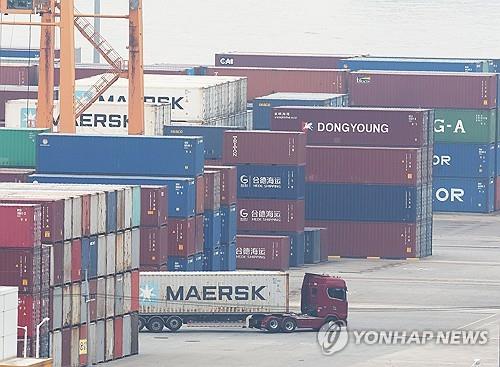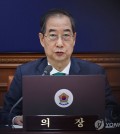- California Assembly OKs highest minimum wage in nation
- S. Korea unveils first graphic cigarette warnings
- US joins with South Korea, Japan in bid to deter North Korea
- LPGA golfer Chun In-gee finally back in action
- S. Korea won’t be top seed in final World Cup qualification round
- US men’s soccer misses 2nd straight Olympics
- US back on track in qualifying with 4-0 win over Guatemala
- High-intensity workout injuries spawn cottage industry
- CDC expands range of Zika mosquitoes into parts of Northeast
- Who knew? ‘The Walking Dead’ is helping families connect
Won-based export settlements drop in 2024: BOK
The proportion of South Korean exports settled in the local currency declined in 2024 due mainly to relatively weak growth in auto exports, central bank data showed Monday.
The use of the won accounted for 2.7 percent of all export settlements last year, down 0.2 percentage point from a year earlier, according to the data from the Bank of Korea (BOK).
The share had climbed in 2023 for the first time in six years, but fell again in 2024.
The decline was largely attributed to the slower growth in automobile exports, which are typically settled in Korean won. Car exports rose 6 percent last year, falling short of the overall export growth of 8.1 percent, the BOK said.
A drop in machinery exports also contributed to the decline, it added.

The U.S. dollar remained the dominant currency used to settle South Korean exports in 2024, accounting for 84.5 percent of total export settlements, up from 83.1 percent in 2023.
“Semiconductors, computer-related products and ships are largely settled in U.S. dollars, and the increase in their exports last year led to a rise in the overall proportion of dollar settlements,” BOK official Kim Sung-joon said.
Chip exports are typically settled in U.S. dollars, and outbound shipments of semiconductors soared 43.9 percent on-year to a record high of US$141.9 billion in 2024.
The use of the euro for export settlements declined to 6.0 percent in 2024 from 6.8 percent a year earlier, while the share for the Japanese yen dropped by 0.3 percentage point to a record low of 2.0 percent.
“The proportion of yen settlements declined mainly in machinery and steel products. Over the longer term, the decrease has been influenced by a reduction in trade volume with Japan,” Kim added.
South Korea’s exports to Japan have been on a downward trend, falling to $29.61 billion last year from a peak of $39.68 billion in 2011, government data showed.
The Chinese yuan accounted for 1.5 percent of total export settlements last year, down from 1.7 percent in the previous year.
Meanwhile, the share of won-based import settlements stood at 6.3 percent last year, down 0.3 percentage point from the previous year.
The use of the U.S. dollar took up 80.3 percent of the total imports, down from 80.5 percent a year ago, according to the BOK.
In 2024, South Korea’s exports advanced to a new annual record of $683.8 billion on solid shipments of semiconductors, while imports decreased 1.6 percent on-year to $632 billion.











